


5 Ways to Maximise Your Recovery
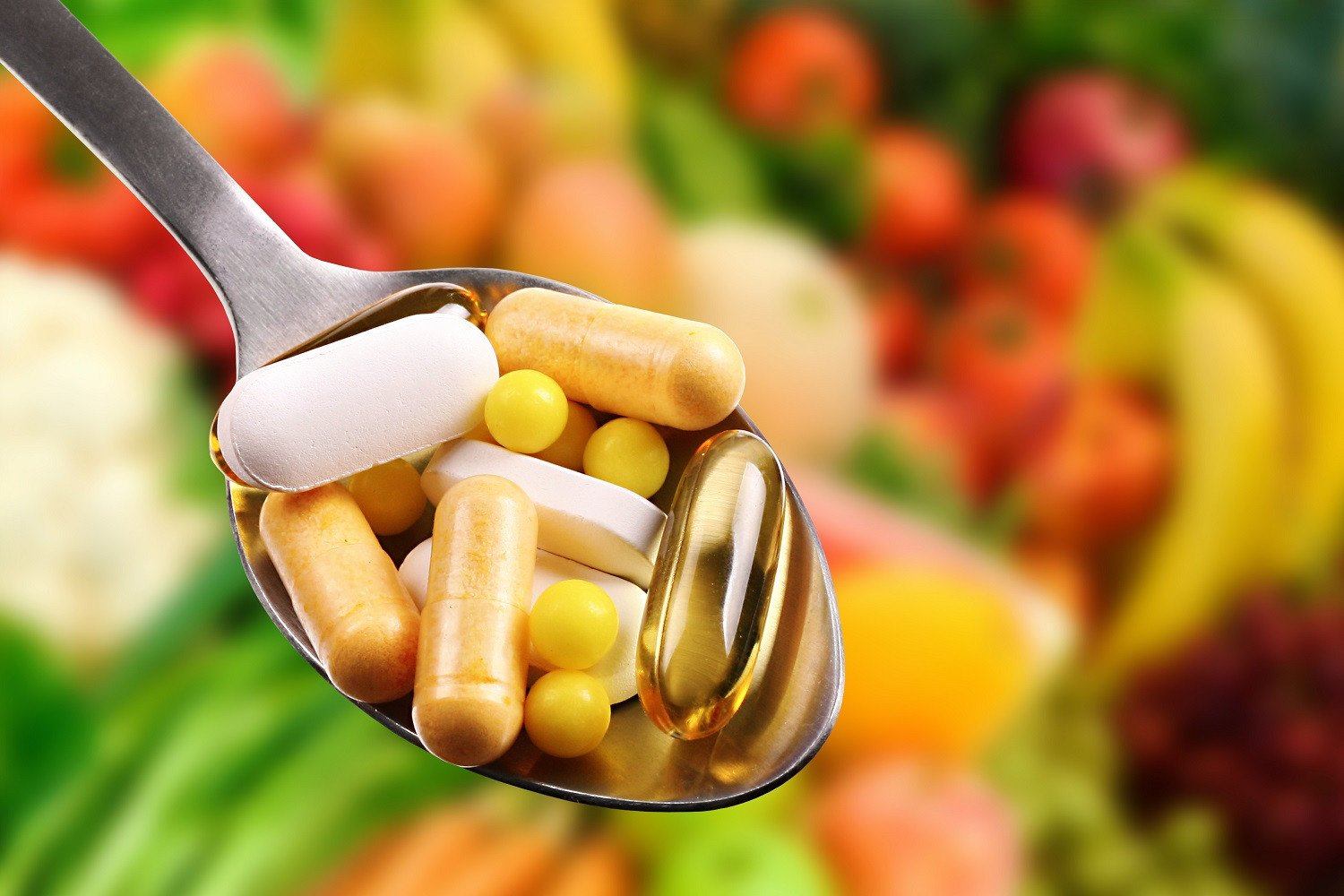
Thirteen Essential Vitamins Everyone Needs
As your parents may have told you over and over again growing up, vitamins are important. The human body does not produce vitamins, so it is crucial that we take these organic compounds from food and/or supplements.
Vitamins are dubbed “organic” because all 13 of them contain carbon. They’re also divided between two categories:
- Water-Soluble: Vitamin C, Vitamin B, B2, B3, B5, B6, B7, B9, and Vitamin B12.
- Fat-soluble: Vitamins A, D, E, and Vitamin K.
Vitamins are otherwise referred to as ‘micronutrients.’
Water-Soluble Vitamins
Water-soluble vitamins, as their name suggests, dissolve in water. They don’t stay for too long in the body, but instead quickly pass through the urine from the time they’re consumed. This is why water-soluble vitamins need to be replaced more often than fat-soluble vitamins.
Fat-Soluble Vitamins
Fat-soluble vitamins stay in the body longer because they’re easier to store. They find a spot in the fatty tissues and the liver, and usually stay in the body for days – some of them even months.
These compounds use lipids (fats) in order to pass through the intestinal tract and be absorbed by the body.
Most Important Vitamins Ever
Let’s not kid ourselves. All vitamins are important for a normal functioning and everyday well-being. That’s why we’re going to put ALL of them on a list for everyone to find their favorite among the bunch.
THE 13 VITAMINS
We’re starting with a list of the four Fat-soluble vitamins.
-
Vitamin A (Retinol, Retinal)

What it does: Vitamin A is an essential player in the development of bones, teeth, and skin; it is also crucial in maintaining proper vision and keeping the body safe from a multitude of different infections and ailments. Vitamin A can assume two forms:
- Retinoid
- Carotenoid
Where to find it: carrots, sweet potatoes, broccoli, kale, eggs, milk, pumpkin, lentils, liver, papaya, and more.
-
Vitamin D (Cholecalciferol, Ergocalciferol)

What it does: Remember that oddly satisfying sensation you get when exposed to morning sunlight? That is your body ‘converting’ the energy from the Sun in order to manufacture Vitamin D. This compound helps in absorbing phosphorus and calcium for strong and healthy bones.
Where to find it: direct sunlight, salmon, shrimp, fortified milk, eggs.
-
Vitamin E (Tocotrienols, Tocopherols)

What it does: Vitamin E plays an important role in protecting the skin from ultraviolet light, mitigates the damage from free radicals, and battles Alzheimer’s disease – among numerous other important properties.
Where to find it: sunflower seeds, kiwi, almonds, olives, turnip greens, asparagus, almonds, and more.
-
Vitamin K (Menaquinones, Phylloquinone)

What it does: This compound is vital in quickly patching up the skin after an accidental cut somewhere on your body. Without sufficient amounts of Vitamin K, you’ll have an increased chance of getting susceptible to bleeding, so it’s not something to be taken lightly.
Where to find it: kale, kiwi, spinach, romaine lettuce, avocado, parsley, and other leafy green veggies, or fruits.
This concludes fat-soluble vitamins.
Water-soluble vitamins add nine to the list of total vitamins.
-
Vitamin C (Ascorbic Acid)

What it does: First off, as the majority of readers may be well aware – Vitamin C fends off colds. This unique property is made possible thanks to its antioxidant abilities that boost the immune system; on the other hand, Vitamin C also helps in repairing the connective tissues between the tendons and cartilage in the body.
Where to find it: kakadu plum, camu camu fruit, brussels sprouts, red peppers, papaya.
-
Vitamin B (Thiamine)

What it does: Vitamin B is the main proprietor behind the utilization of carbs in the body and converting them to energy. Another important property of this micronutrient is promoting a healthy nervous system for impeccable functioning of the communication branches in the brain.
Where to find it: sunflower seeds, pork, grain, brown rice, potatoes, cauliflower, tuna, lentils, and more.
-
Vitamin B2 (Riboflavin)

What it does: Vitamin B2 or Riboflavin is crucial in breaking down the three macronutrients for energy: protein, carbohydrates, and fat. This compound also promotes healthy skin, whereas a deficiency in Vitamin B2 may cause a condition called ‘ariboflavinosis’ (lips lesions, conjunctivitis, sore throat).
Where to find it: banana, asparagus, calf liver, milk, okra, yogurt, fish, persimmons, and more.
-
Vitamin B3 (Niacin, Niacinamide)

What it does: As with B2, Vitamin B3 also plays an important role in preserving and maintaining a healthy nervous system. In addition to that, Niacin helps the digestive tract properly do its job.
Where to find it: chicken breast, halibut, turkey, milk, avocado, nuts, mushrooms, and more.
-
Vitamin B5 (Pantothenic Acid)

What it does: This water-soluble compound does multiple things, including breaking down carbs and fat for energy, transforming food into glucose, managing a key role in the forming of stress and sex-related hormones, and more. Vitamin B5 deficiencies are rare since it can be found in most, if not all foods.
Where to find it: meat, broccoli, fish, and most foods.
-
Vitamin B6 (Pyridoxamine, Pyridoxal, Pyridoxine)

What it does: Vitamin B6 takes a major part in the production of the neurotransmitters norepinephrine and serotonin, as well as in making myelin. This chemical compound is involved in many functions in the body, including a role with 100+ enzyme reactions, and promoting multiple benefits within the central nervous system.
Where to find it: milk, meat, banana, veggies, and nuts.
-
Vitamin B7 (Biotin)

What it does: Vitamin B7, or Biotin, is crucial in maintaining energy during regular workouts. This compound helps in keeping the red blood cell levels in check, which in turn are responsible for transporting oxygen in the body; this is crucial for active individuals and people who want to continue that path.
A deficiency in Biotin may cause dermatitis, enteritis, or other illnesses.
Where to find it: liver, egg yolks, legumes, almonds, romaine lettuce, and more. However, it’s important to note that Vitamin B7 is found in LOW amounts in any food – therefore a good bet would be to take it in supplement form.
-
Vitamin B9 (Folic Acid)

What it does: This vitamin is a top priority for women who are expecting or plan on doing so in the near future. Vitamin B9 – or Folic Acid – plays a major role during pregnancies, since it prevents unwanted birth defects or miscarriages. In addition to this, Folic Acid is also linked to anemia prevention and new cells reproduction in the body.
Where to find it: lentils, legumes, sunflower seeds, black beans, pinto beans, and beer.
-
Vitamin B12 (Methylcobalamin, Cyanocobalamin, Hydroxocobalamin)

What it does: Vitamin B12 prevents anemia and promotes the formation of healthy and mature red blood cells in the body. This micronutrient is also vital in preserving a healthy nervous system.
Where to find it: shellfish, milk, fish, meats. Plants do not contain this compound, and this is why vegans must take Vitamin B12 supplements in order to stay healthy.
This concludes water-soluble vitamins.
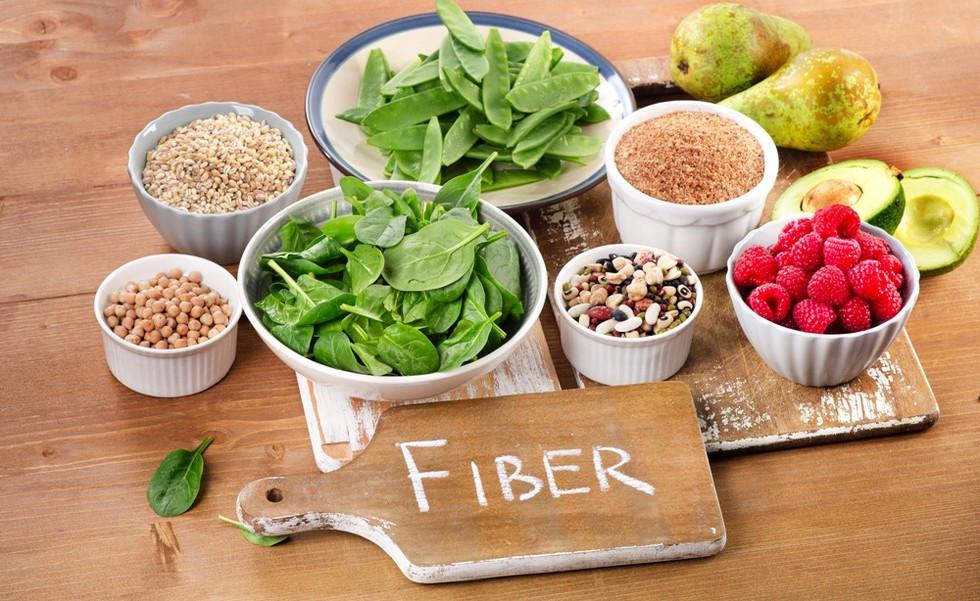
10 Health Benefits of Fiber

From parents to doctors to random health gurus you bump into during a walk in the park – it seems that everyone believes that placing fiber as a major component of your diet should be a top priority, without backing it up with evidence!
Well, not anymore!
We’re here to suggest and explain how and why adding more fiber to your diet will improve your health and give you a boost in your day-to-day performance levels. Plus, we'll also explain how fiber will help you tackle any challenges that life happens to be throwing your way!
What is Fiber?

Fiber comes from indigestible parts contained in veggies, fruits, legumes and whole grains (split peas, artichokes, peas, lima beans and more.)
There are mainly two kinds of fiber: soluble and insoluble. Soluble fiber breaks down in water and is known to help achieve normal cholesterol and blood glucose levels in the body. Foods rich in soluble fiber are apricots, oranges, mangoes, peanuts, kidney beans, black beans and more.
On the other hand, insoluble fiber does not dissolve in water – therefore it helps with preventing or relieving constipation and getting rid of irregular stool patterns. Some foods that contain high amounts of insoluble fiber are cauliflower, lentils, wheat bran, flax seeds and more.
Many foods carry both soluble and insoluble fiber. For the best results, opt to consume a high variety of fiber-rich foods.
Lowering Cholesterol Levels

Studies have shown that soluble fiber helps in lowering the “bad” cholesterol, or low-density lipoprotein levels.
Normalizing Digestion

Fiber makes it easier for stool to “pass over." It does so by increasing the size and volume by the dozen, thus relieving the time it takes for the stool to be pushed out. Fiber also soaks up water and solidifies the passable matter to transform watery stool into something you can “work with.”
Aiding in Colon Health
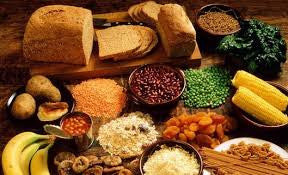
Going for a diet high in fibers can exponentially lower the risk of getting hemorrhoids or colon pouches (diverticular disease).
Battling Diabetes

A diet rich in insoluble fiber can significantly decrease the risk of succumbing to types 2 diabetes. Also, for those who are already affected with the disease, soluble fiber has shown to slow down the absorption of glucose into the bloodstream. This makes it easier for diabetics to control their blood sugar levels.
Stabilizing Blood Pressure Levels

The fiber found in flaxseed, oat bran, and black beans helps in lowering high blood pressure and also keeps inflammation at bay.
Helping the Heart

According to a study that appeared in the Journal of the American College of Cardiology Foundation, female subjects who consumed 26.3 grams of fiber on average were less likely to develop heart disease than those who ingested less fiber. The study followed exactly 39,876 women during the course of six years.
Assisting in Weight Maintenance

High-fiber edibles will satisfy your cravings faster and bring you up to a full belly quicker as opposed to foods low in fiber. Therefore, you’ll naturally maintain a healthy weight by opting for a diet abundant in both ends of the fiber spectrum (soluble and insoluble).
Preventing a Formation of Kidney Stones

We’ve already seen how fiber can help in maintaining normal blood sugar levels. This, in turn, lowers the chances of the body giving way to insulin spikes that can lead to developing kidney stones or gallstones.
Boosting the Immune System

According to top nutritionist Ann Louise Gittleman, Ph.D., CNS – fiber found in certain foods like flaxseeds can help flush down any toxins your body have accumulated and power up the immune system to effectively battle its way through the everyday hassle. This can particularly come to aid to post-menopausal women due to certain “lignans” in the “fibrous shell” that keep excess estrogen in check.
Trumping Stroke

A study has shown that total fiber intake was inversely proportional to the risk of developing a stroke. Additionally, increased fiber consumption lead to a significantly lower risk of developing the first stroke.
Conclusion?
In accordance with an HMD publication, adults aged 50 or younger should strive to ingest 38 grams of fiber for men, and 25 g. for women per day. Adults over the age of 50 should go for 30 g. for men and 21 grams of total fiber intake for women per day.
But before you start gobbling up legumes and munching on artichokes, remember that too much fiber entering the body at once could lead to bloating and unwanted gas. And you certainly don’t want to pass the wind while doing a powerpoint presentation in front of your biggest client now, would you?
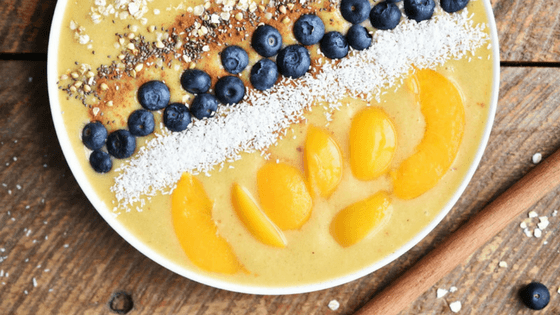
Healthy Carbs To Eat While Losing Fat

Diet naysayers and self-proclaimed nutrition experts may preach that including carbohydrates in your diet while trying to tone-down is the biggest sin since egg-free mayonnaise. Well not unexpectedly, they couldn’t be further from the truth. Eating healthy carbs is not only possible, but it can be made into a fun activity for friends and family alike to find enjoyment in.
Moreover, carbs alone won’t make anyone fat, that much is sure. Carbohydrates are needed to provide energy for the body, and fasting on carbs can easily be as detrimental to your preferred weight levels since it would make you feast on junk food to the ground like there’s no tomorrow. According to nutrition twin experts Tammy Lakatos Shames, R.D. and Lyssie Lakatos, R.D. -- you can undoubtedly ‘melt’ those love handles by munching on the RIGHT carbs.
Which ones are the right ones? – We’re glad you asked.
Green Peas

Green Peas are a great source of potassium, zinc, vitamin C and dietary fibers. Furthermore, zinc is a known enemy of the common cold and may help you survive through season transitions by boosting your immunity threefold. Zinc is also involved in the creation of leptin – a hormone familiar to food enthusiasts as the “fat hormone” – which name alone suggests that it has something to do with regulating satiety even before edibles manage to reach your belly’s bottom.
So in a way, green peas have double the impact on your overall regulation of fat.
Barley

No one is a fan of blood sugar peaks and valleys that can leave people feeling starved and sign for desperate measures – such as that chocolate iced crème filled donut sitting about freely on your shelf.
When ingested, pearled barley, hull-less barley or even barley groats release sugar slowly into the bloodstream, maintaining an almost-perfect glycemic curve that battles against hunger in a natural and healthy manner.
Whole-Grain Bread

In a research conducted at Harvard, a continuous nibble at whole-grain breads fares well for the heart and may help in battling heart disease in the long run. In another study done by Penn State scientists, participants who indulged in a low-calorie diet while munching whole grains lost substantially more fat than those who ate processed grains.
Also, be on the lookout for 100% whole grain bread packages, since clever marketing can trick you into buying “whole grain” labeled bread made of only 51% whole grains.
Whole-Wheat Pasta

As with whole-grain bread – it’s only logical that whole-wheat pasta shares some benefits for keeping that waistline in check, plus more. Swapping regular for whole-wheat pasta is directly linked to having a thinner waistline, a significant decrease in abdominal fat and a lower body mass index (BMI).
But, as author Keri Gans, R.D. recommends in his book, to keep weight in check make sure you’re not gobbling up more than 200 calories JUST from pasta alone.
Chickpeas

To reach satiety faster than you normally would, opt in for foods part of the legumes family such as beans, peas, lentils and chickpeas. These superfoods are known to fend off overeating and promote increased energy levels, fitness and also help while working out.
A great recipe involves 3 tablespoons of olive oil, chickpeas, and spices to taste roasted at 375F for 40 min. to get an excellent snack viable at any given time of day.
Pears

Again, as supported by clinical trials, the guys and gals at Annals of Internal Medicine came to the conclusion that healthy adults whose intake consisted of at least 30 grams of dietary fibers per day had lost 5 pounds in one year. These participants did not make any other change to their existing diets except the addition of fiber.
Pears are known to have high amounts of fiber, vitamins and other important nutrients that make it not only a great source of healthy carbs – but also a powerful fruit for individuals seeking an overall improvement in their eating habits.
Popcorn

Trading off potato chips for air-popped popcorn kernels would be a welcome alternative for all – especially those trying to get rid of fat. Popcorn is good for the heart, reaches satiety levels faster than, say, fried potatoes and reduces hunger like a boss.
A great alternative to ease that yearn for fatty foods once and for all.
Having suggestions of your own? Go ahead and share them below and we’ll be more than happy to answer.
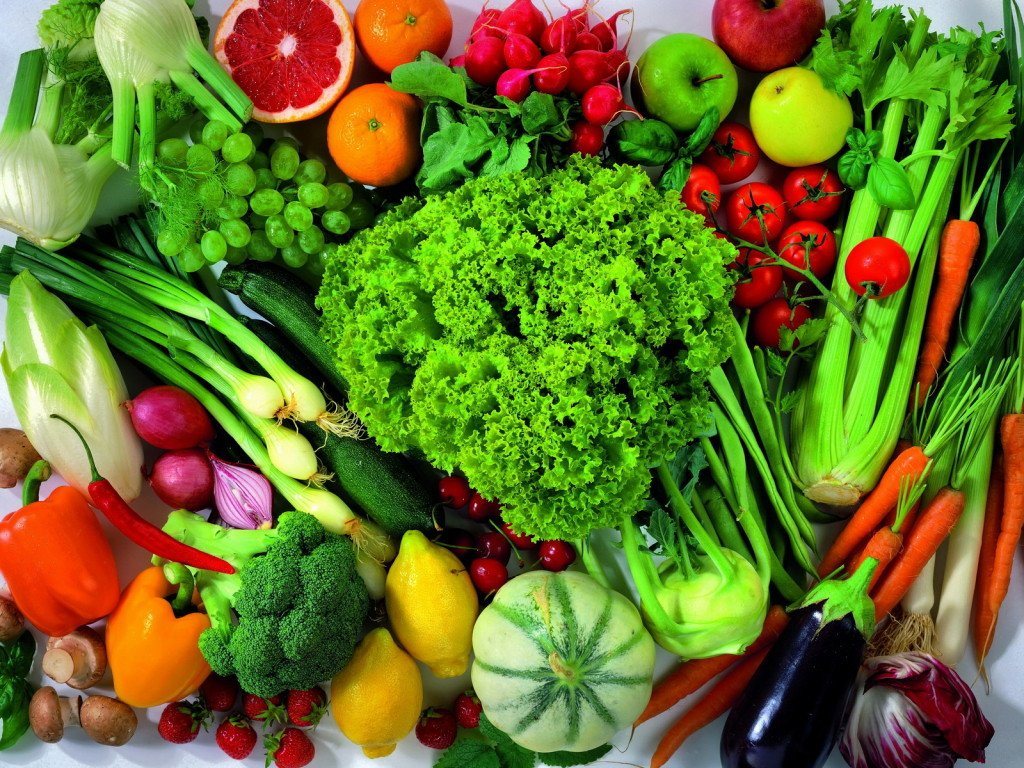
Ten Foods That Have Detoxifying Benefits

Among the overabundance of so-called ‘cleansing’ diets currently available online, only a few offer real advice on how to detox your body without starving yourself to death. After all, the days when humans had to cross long distances while munching on just raspberries are long gone. Now, food is available just around the corner at countless markets worldwide. The only thing left for you to do is to come up with a bucket list, go on a shopping spree and hope that you’ll nail that diet right off the bat.
But what diet are we precisely talking about here?
Well, how about a diet that will have enough nutritional value, be healthy and tasty all at the same time? Is it possible? Of course it is! Take a look at what our editors came up with while searching for the best foods to naturally detox your body.
Broccoli

Broccoli is that veggie that somehow always ends up on top ten healthy lists. Why? Because it’s Mother Nature’s way of telling us that it is, mhm, healthy. Broccoli contains both substantial macronutrients (carbs, protein) and vitamins, so no wonder it’s the go-to mini-tree to detox your body.
And how does it do it?
Broccoli contains ingredients that work alongside your liver enzymes to transform toxins into an easily disposable material. Then, the processes in your body ‘push out’ the unnecessary waste for good. In simple words: broccoli makes everyone’s life a tad bit easier.
If you haven’t found a way to make broccoli taste great yet, try to steam-cook it, or even munch it raw. Whatever you do, don’t microwave broccoli since it tends to lose its detox properties.
Asparagus

Asparagus holds numerous benefits for the human body, like getting rid of toxins, battling against the cons of aging, aiding the cardiovascular system and more. But most importantly, asparagus helps the liver to filter any toxic waste quickly and more efficiently.
Plus, asparagus fights the biggest battle of them all – cancer. It reduces the risk of breast cancer and increases the chances to survive.
Beets

Beets usually find their way into a Greek Salad and other heterogeneous mixes that include a vast array of vegetables. But, on its own, beets are worthy of including into a detox diet because they do just that: cleanse the body.
Beets are important because they ‘flush’ the toxins out and more importantly – make sure that they don’t come back. Other foods may skip the latter and this is when the toxins get reintroduced back into the organism. With beets, once they go out – they never come back.
Plus, beets help in keeping free radicals in check, thus helping even further in keeping your body at a permanent homeostasis.
Dandelion Root

Now here’s an unconventional one: dandelion roots can help in cleansing just as well. While not ‘food’ unto itself – you can opt for dandelion spices to spark up your meals a notch.
Most plant aficionados refer to dandelions as a weed, but that should not stop you from trying something new in your diet. The plant has several healing factors, one of which is aiding the liver to do its cleansing work. And why wait for the last moment? Include dandelion roots in your diet now and your body will thank you later.
Blueberries

Yes, those tiny little spheres that everyone loves. So why all the hassle? Blueberries have a natural form of aspirin that prevents inflammation and lessens pain. As argued by a published study – 300 grams of blueberries helped in decreasing DNA damage in cells by 18%.
And if this wasn’t enough, blueberries also aid in stopping bacteria in the urinary tract. They feature antibiotic, as well as antiviral properties. Blueberries aid to the detox process thanks to a form of phytonutrients dubbed as ‘proanthocyanidins’ which they contain.
Ginger Root

This root is associated with many medicinal benefits and is known to have astringent properties (aiding in a sore throat, acne.) It also helps in liver functions and speeds up the detox processes that occur naturally in the body.
There are countless ways to prepare ginger. One of them requires you to munch on ginger roots solo. Other diets recommend ‘spicing’ up your water with ginger to taste better. Whichever way you prefer, you cannot do wrong with this one.
Fennel

Fennel is rich in vitamin C which directly supports the immune system of the body. It also sports decent amounts of vitamin B – a crucial ingredient in transforming the homocysteine molecule into other molecules to prevent inflammation.
In addition to that, the fennel bulb also contains a decent amount of folate and fiber, which help the digestive process in the body to do its job.
Avocado

Granted, the avocado contains some fat but is nevertheless great for detox if you know how to go about it. It also possesses antioxidant factors and a high amount of fiber to aid in digestion. The highlight here is to opt for an organic one and avoid cheap guacamole sauces from fast-food chains. This way you’re making sure that you’re getting all the benefits from the juiciness that is the avocado.
Garlic

Garlic is crucial for any diet. It heightens the immune properties of the body and helps with the liver. It is high in sulfur, meaning it’s good for detox and repelling bacteria. Recently, garlic was shown to have better antibiotic properties than most over-the-counter antibiotics, which is pretty neat.
Olive Oil

When you’re hurrying to detox your body, substitute regular (sunflower) for olive oil. Upon using, however, make sure you’re not cooking it at a high temperature. An ideal situation would be to put some in your preferred salad or enrich the flavor of your main course by as little as few droplets of olive oil dressing.
The go-to olive oil would be ice-pressed, but if you’re having trouble finding one – go ahead and pick cold-pressed olive oil instead. Your body will be thankful.
Did you feel like we missed something? Share with us in the comments!



